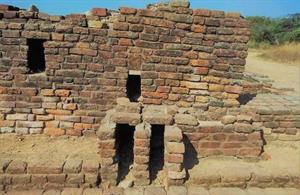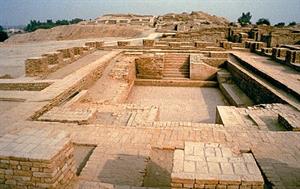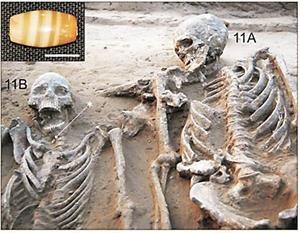PDF chapter test TRY NOW
Urbanized Indus valley civilization:
More than \(5\) million people lived in the Indus Valley Civilisation. The Indus cities are best known for their urban planning, technical advancements, and political advancements through land and urban design.
Harappans used the standard-sized bricks and weights also in other Indus cities such as Mohenjo-Daro and Dholavira.
Harappans used the standard-sized bricks and weights also in other Indus cities such as Mohenjo-Daro and Dholavira.

Remains of brick structures in Harappa
These cities perfectly planned with wide streets, public and private wells, properly planned drainage systems, bathing platforms and reservoirs.

Great bath of Mohenjo-Daro
One of the most well-known structures of Indus cities is the Great bath of Mohenjo-Daro.

Skeletons exposed from the Harappan cemetery
There were also other highly developed cultures in neighbouring regions such as Baluchistan, Central Asia and peninsular India. Material culture and the skeletons from the Harappan cemetery and other sites testifies the continual intermingling of communities. Harappa was there before what we call the ancient Indus civilization flourished, and it exists as a living town today.
Reference:
https://1.bp.blogspot.com/-yZ88ZMLUfag/XB4Q1-tFq7I/AAAAAAAABO4/A0LeTGKoVucF43GCpFXziYSxmlTZX5p9gCLcBGAs/s640/indus%2Bbricks.jpg
https://www.harappa.com/sites/default/files/styles/galleryformatter_slide/public/slides/bath-indus.jpg?itok=C9nNta-K
https://i.redd.it/wohan4e3y0w41.jpg
